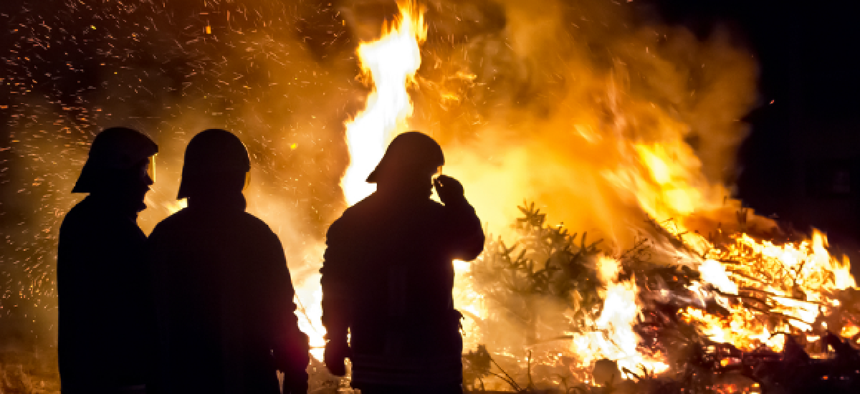Free situational awareness app gaining traction among California firefighters


Connecting state and local government leaders
The Next-Generation Incident Command System is being used by emergency management agencies in California for planning, response and recovery for risky and hazardous events – many of them wildfires.
Over the last four decades the number, severity and size of wildfires has increased. And each year, on average, nearly half of all the money spent fighting wildfires in the West goes to California fires, which often threaten homes and infrastructure, according to Climate Central.
In that environment, a free Web-based situational awareness tool is gaining momentum. The Next-Generation Incident Command System (NICS) is being used by at least 270 emergency management agencies in California and a few other areas for planning, response and recovery for risky and hazardous events – many of them wildfires.
NICS, formerly the Lincoln Distributed Disaster Response System, was first used in California in 2010; last year it was used in managing 102 incidents in the state, the majority of them wildfires, according to a recent article in Wildfire Today.
The Web-based tool, developed by MIT Lincoln Laboratory and the California Department of Forestry and Fire Protection (CAL FIRE), can also be accessed by law enforcement officials, emergency services, technical specialists, public utilities and other departments and agencies involved in incident response. It has been described as “technology for the tired, dirty, hungry – dirt simple to learn, dirt simple to use.”
NICS provides collaboration and communication capabilities across all echelons of responders, according to the NICS website. Among the benefits listed are its ability to enhance the quality and accessibility of sensor data and to integrate location data for resources, vehicles and personnel. During an incident, NICS provides an information backbone that manages and distributes data, including real-time vehicle location feeds, weather, critical infrastructure, and terrain information.
Firefighters can use NICS to quickly do real time fire mapping on the scene, including an incident perimeter, staging areas, evacuation zones, road blocks, division breaks and symbology commonly used on incident maps. The maps are immediately available over the Internet to anyone with access to the incident. NICS offers graphical tools, including geo-referenced virtual whiteboards, for dynamic interagency collaboration.
“This technology has been great for our effectiveness during emergency planning and during incidents,” said Greg Alex, fire captain and pre-fire engineer for San Luis Obispo County Fire Department, in a comment in the Wildfire Today article. “It has provided information that was critical to our first responders and command staff. This information has saved time, money and made us extremely efficient at providing life intelligence to all our cooperating agencies during incident for three years.”
“NICS has also given us the ability to load pre-planning information specific to our response area,” continued Alex. “The ability to load critical GIS data in the field during the events has enabled us to quickly brief cooperating agencies, ground units and regional planning staff,” improving firefighter and public safety.
The free, open standards-based NICS can be used on computers, tablets and hand-held devices and is compatible with Windows, iOS, Linux, Android, and the Web browsers Chrome, Firefox, Safari, and later versions of Internet Explorer.
The app will not replace all methods of communication. Firefighters working in remote locations may not have Internet access. However, higher level managers in offices will still be able to create and share information.
While NICS is available for free to any emergency response organization, it currently is being primarily used by state and local agencies in California. No federal wildland fire agencies are using the system, according to Wildfire Today.
The Department of Homeland Security’s Science and Technology Directorate has funded the project so far, but its participation will end in October of this year. Meanwhile the program is seeking funding for the next five years for the project.
NICS is described as being 20 percent complete, according to by retired California Fire Chief Bob Toups, NICS California Liason, and Dr. Jack Thorpe, acting director of NICS’ user group. They are seeking plug-and-play apps to expand NICS’ capabilities, similar to those for smart phones and tablets, from the emergency response community – or indeed anyone.

NEXT STORY: Saving time and money with remote IT support




